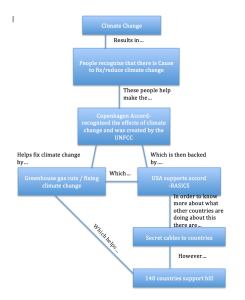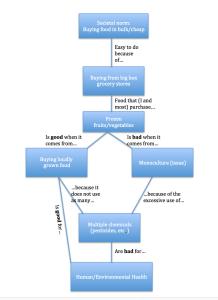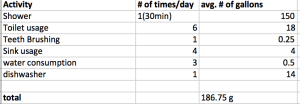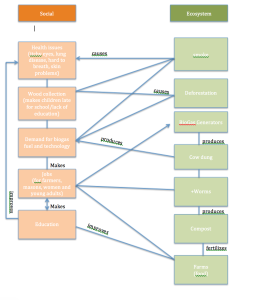In 150-200 words, explain why you think either we should be ecocentric or anthropocentric?
Throughout this course, we have learned may things about how the world works; what hurts and helps the planet in terms of the health and prosperity of the planet and living organisms. In an ecocentric, non-anthropocentric way of thinking, humans are not the most important beings. The world would thrive without human beings. Although we do help many species, I feel as though we are hurting Mother Nature and her natural course. Although I think some species would still be in danger of being extinct / there would still be major natural disasters, It would all be as a consequence of nature and not of human beings. Human-beings cause so much nearly irreversible damage to the earth we are almost forcing ourselves to be anthropocentric by way of necessity. However, we have not found enough ways to sustain our selves in this way. We MUST rely on most of human nature to survive. But our horrible habits of destroying the earth, like mono-cropping, pollution of the oceans and the soil and the air, deforestation, horrible murdering of animals for bulk-meat food by way of huge corporations… and more… is going to make us have to rely on another way of surviving if we keep growing in this way of living. In conclusion, we must be more ecocentric in order for the earth to not be destroyed by human being in the hundreds and thousands of years to come.
In 150-250 words, What species would you protect if you think ecocentric is more important?
Since, according to most theories, living beings originated from microorganisms, preserving the various organisms that create important, life supporting plants is the most important thing to preserve. There is a “dooms day vault” in Norway, Called the Svalbard Global Seed Vault, where millions of seeds from plants around the world are being stored, just in case anything, like a dooms day, would ever happen on Earth. I think something like this should happen for living organisms somehow too. Obviously, I’m not sure exactly how we could preserve them for ever, maybe by freezing..? But finding the organisms that can eventually produce intelligent life again if anything were to ever happen to us on earth, ie- if karma kicks in and mother nature decides to wipe out all of human kind ( Noah’s Ark style..? haha) we would have a way to regrow again.




